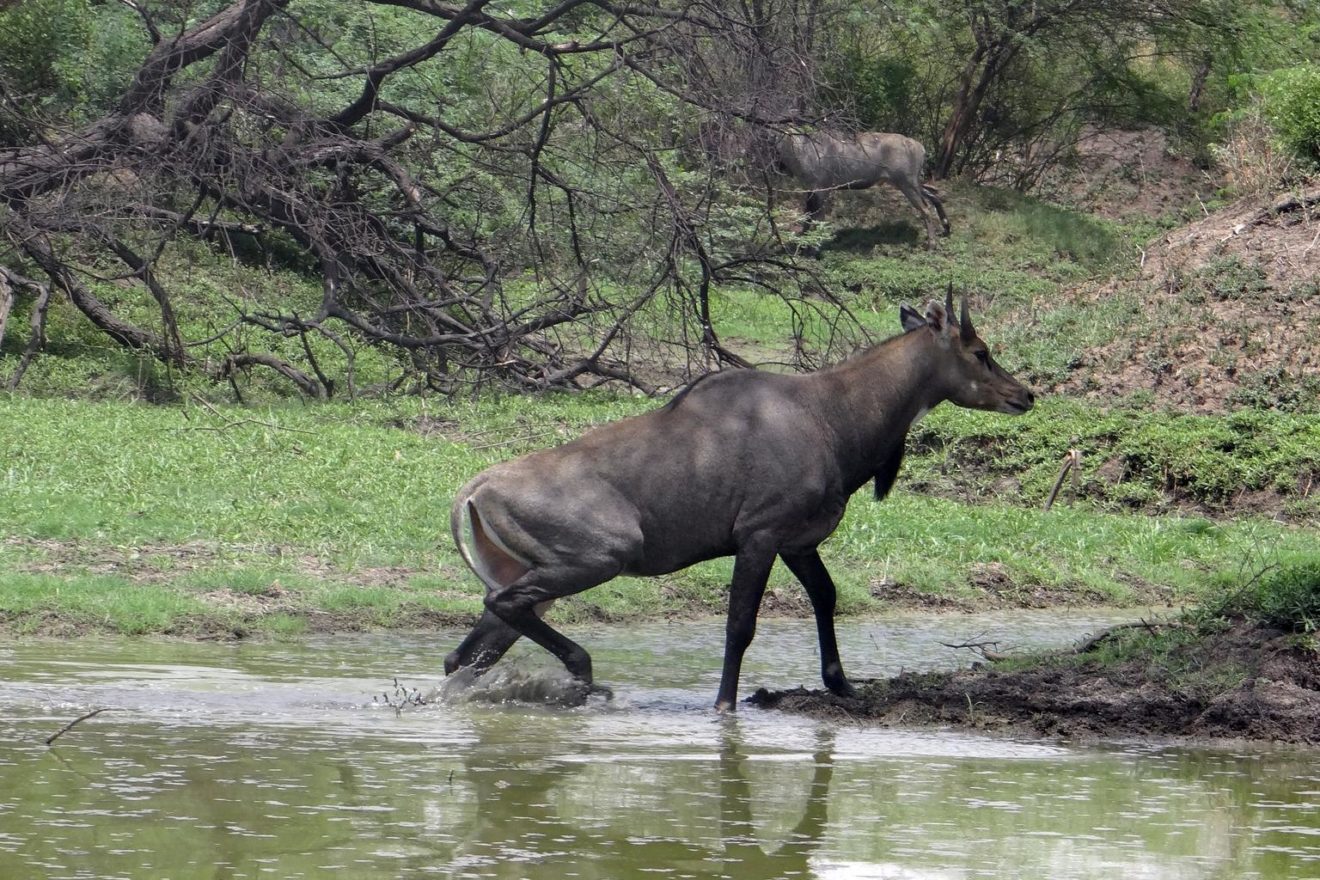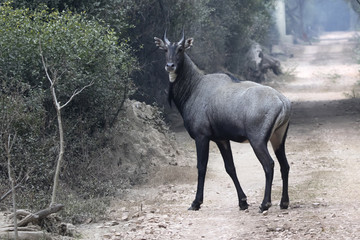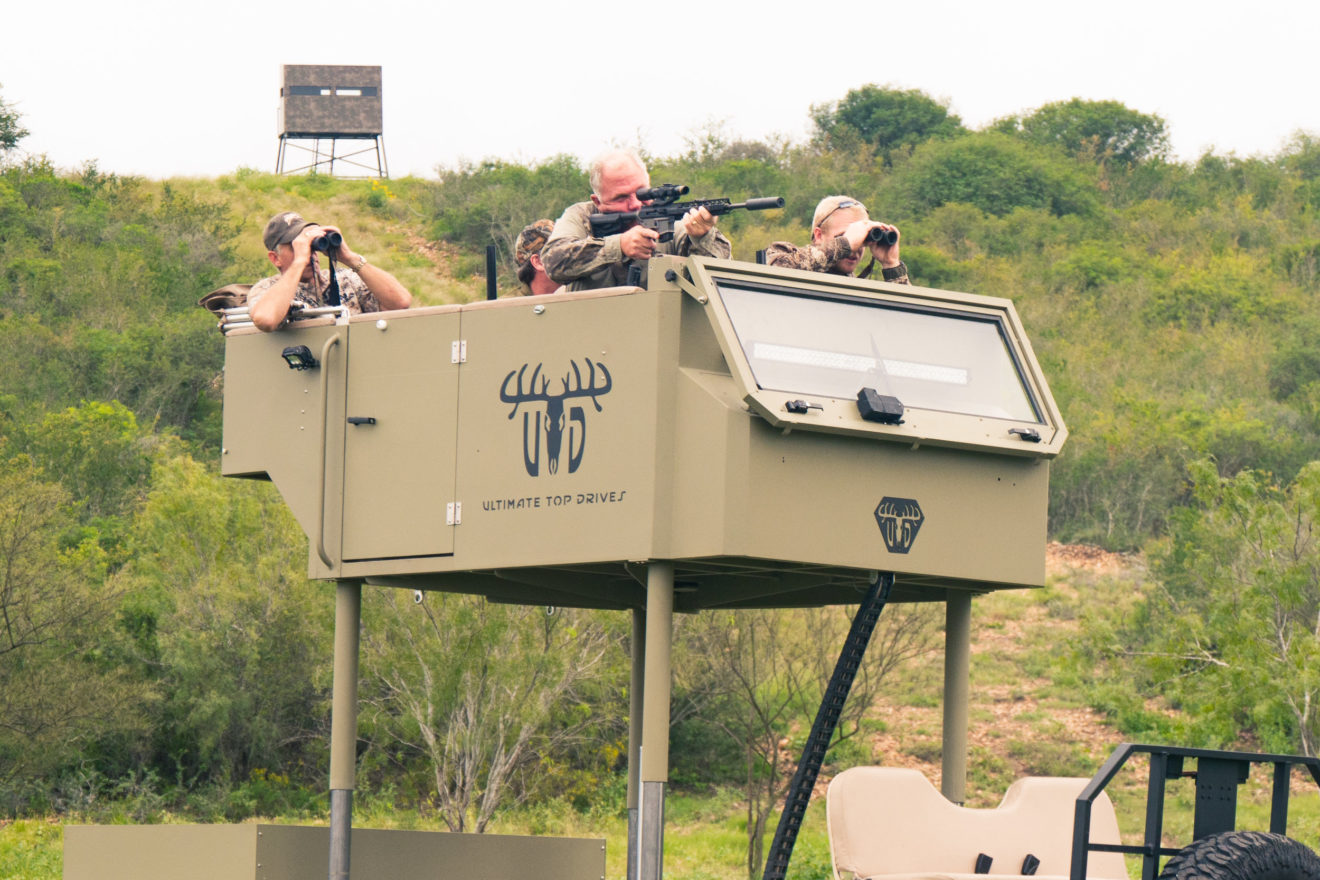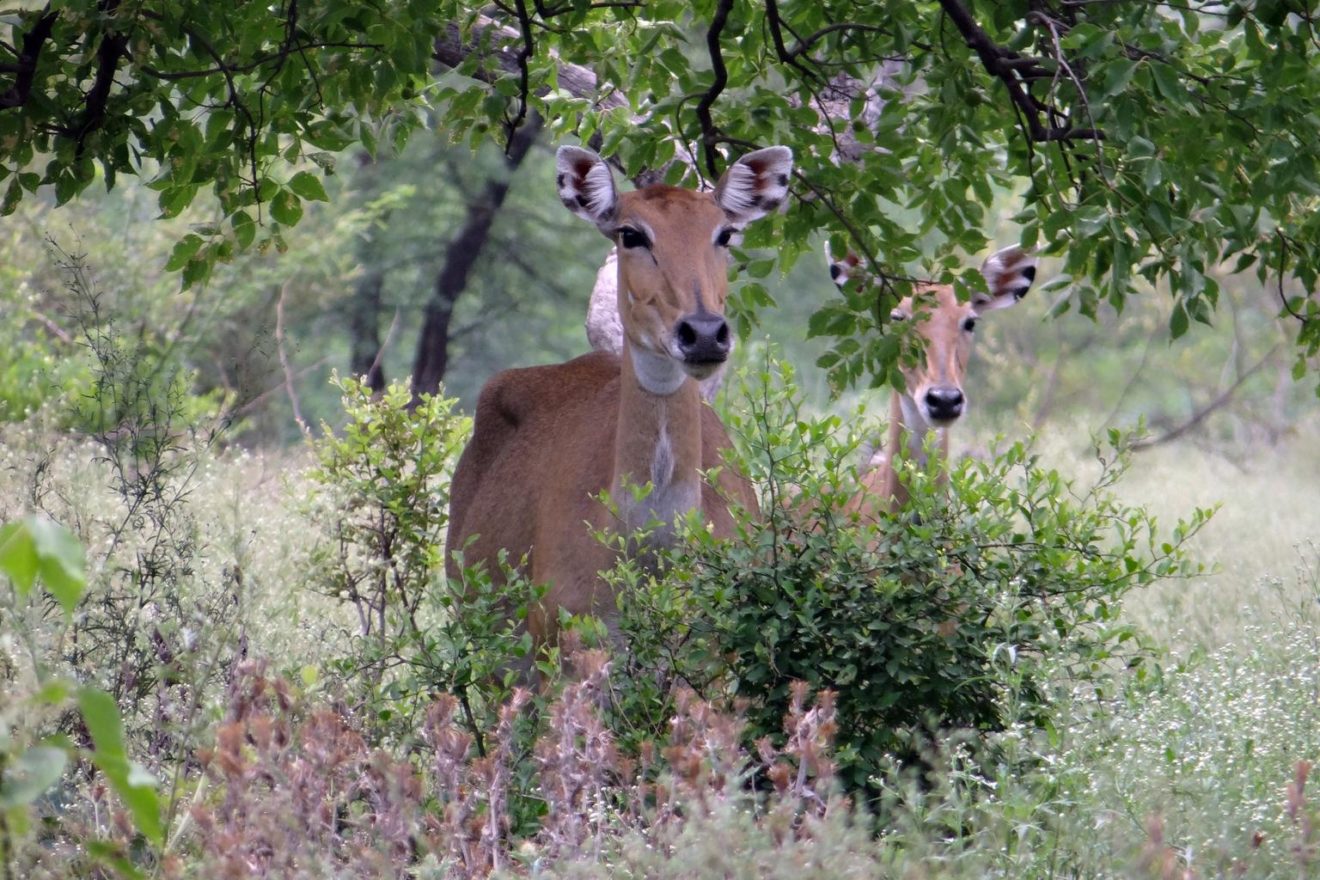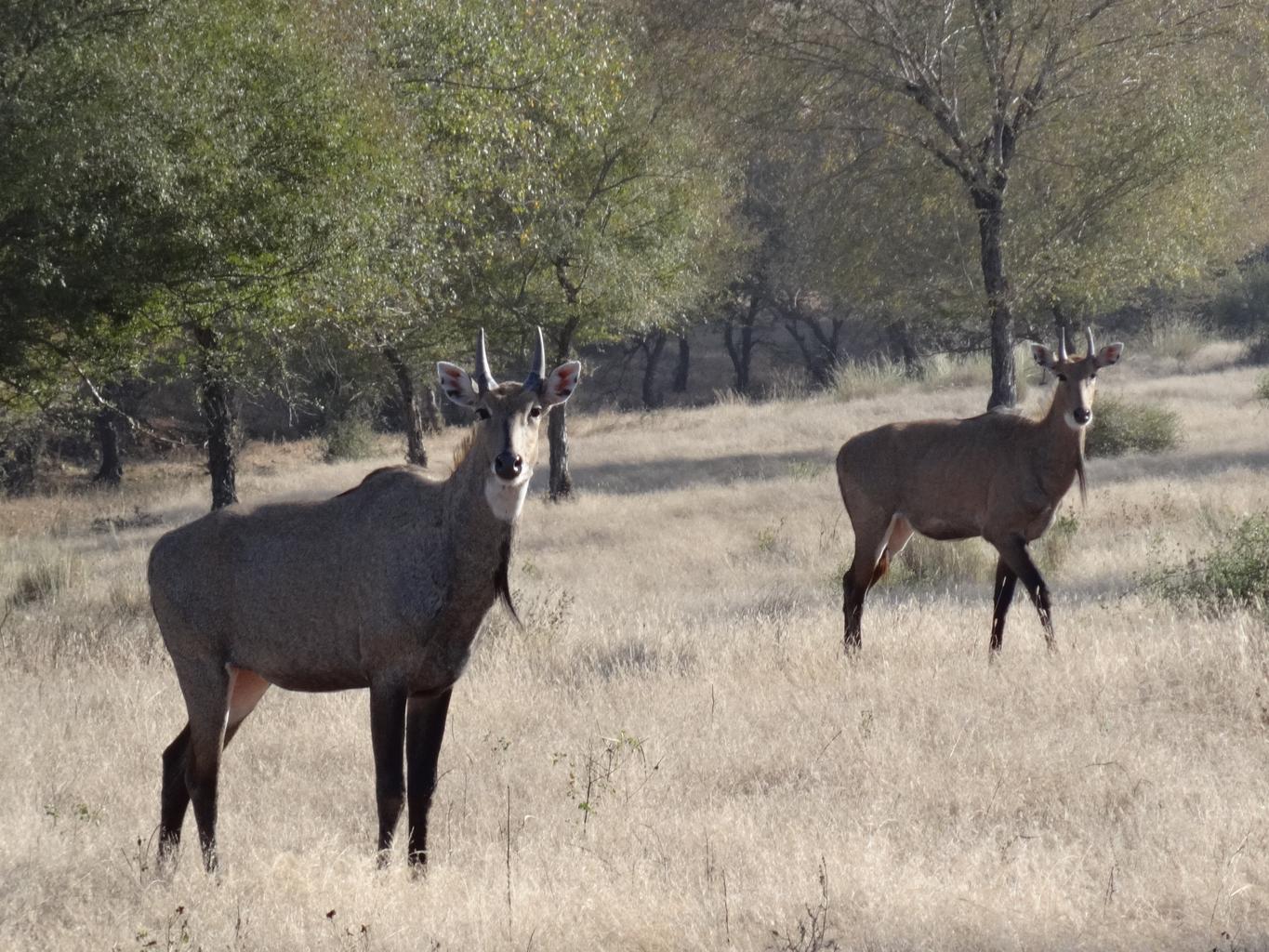Nilgai Antelope Hunting in Texas
I was very fortunate in 1995 when I was invited on a deer hunt at King Ranch in South Texas. For the weeks leading up to the trip, I had nothing but whitetail bucks on my mind – large ones oozing from the dense brush country.
What I didn’t know was that I would be introduced to one of the most unique game animals in the world: the Nilgai Antelope. As a native Texan and avid hunter, I was amazed that I had never even heard of the animal. Gazing at the Nilgai mounts in the lodge, I couldn’t wait to see one on the hoof.
For the sportsman familiar with this extraordinary animal, Nilgai represents an extremely appealing hunting opportunity – and there are several reasons.
Where Nilgai Came From
Originally stocked on the King Ranch in the 1930s, Nilgai antelope adapted quickly to the South Texas brush country plains. Known for his efforts in restoring various native species, it is Caesar Kleberg, in particular, that is credited with setting the Nilgai free on the expansive ranch.
The initial Nilgai that hit Texas dirt came from zoos. They not only thrived in the South Texas landscape, but their successors have proven to be quite hardy – and a wild and formidable hunting challenge. These early transplants from almost a century ago have grown to a herd of over 50,000. Texas is currently home to more free-range Nilgai than their native country of India.
Nilgai Traits and Habits
Nilgai antelope are big, rugged animals and represent the second-largest member of the antelope family. Mature bulls are typically very dark in color, exhibiting a black and blue tone. Consequently, males are often called “blue bulls” due to their striking coat. Nilgai males also grow to massive proportions, reaching over 600 pounds. Perhaps their only unimposing trait are the two horns that top out around 10-12 inches on each side of their heads. Nilgai cows and calves are light to pale brown.
Nilgai doesn’t fare well in colder climates, and extended hard freezes can thin their herd. This, however, is far from the norm in the hot and balmy South Texas coastal bend region where they roam.
Nilgai graze on grass and herbs and can tolerate livestock better than deer species because they can reach tree branches and don’t fully depend on surface vegetation. In India, they eat woody plants and have a wide variation in diet. They prefer areas with short bushes and trees as well as grassy plains.
Hunting Nilgai
Nilgai antelope are diurnal, meaning they are most active during the day. Anyone who chooses to hunt them is in for quite a ride. Regardless of weapon, chasing the elusive creature can be a tall order. And often a chase it is. They can quickly cover a lot of ground and the usual result is long shots – and sometimes running ones. When pursued, they swiftly run across the landscape between a multitude of mottes of oak, mesquite, and native underbrush.
“At first glance, they seem to lumber through the terrain – but it doesn’t take too long to realize just how fast they are. They’re a truly elusive animal,” said Ronnie Howard, long-time guide and Manager at the King Ranch – San Tomas Hunting Camp. “Also, they have remarkable visual and hearing abilities and are proficient at sensing both vehicles and humans afoot.”
Not only are Nilgai wary of hunter infringement, but they are also tough as nails, with an exceptionally stout hide. The result is often no exit wounds and light blood trails. As such, most outfitters insist on 7mm rifles and up. The 300 Win Mag, 338 and 375 H&H are great choices for hunting Nilgai.
Nilgai can be hunted year-round. If you’re lucky to harvest one, you will be treated to some of the best game meat on the planet. It has a mild flavor and a texture similar to veal. The fat content is typically under 1%. It’s so good, many prefer it over beef.
Safari-Style Hunting
Due to the Nilgai’s shrewd abilities, safari-style hunts are generally the ticket. Here, hunting rigs have the ability to navigate sizeable areas and spot the animals from various distances. Due to the Nilgai’s skittish nature, this necessitates a good eye and readiness to make a quick shot. Even this method often results in a chase, and many seasoned guides can locate them with a knowledge of the land and skilled maneuvering.
Spot and Stalk
Hunters can also put a stalk on a Nilgai, but it’s a challenging endeavor. They’re frequently on the move and creeping into range for a shot is difficult. It can be done, however, with patience, caution, and a willingness for long strenuous walks.
Using this method with a rifle requires a good set of shooting sticks. Stalking a Nilgai with a bow is a particularly arduous task. It demands accomplished shooting skill and shot placement, requiring archers to shoot with enough force to get a broadhead through their tough hide and vital organs.
In either case, a good option is to spot and stalk Nilgai during their rut. Like whitetails, they become less cautious during this period and pay extra attention to their cows. This can result in a few precious additional seconds to make a shot.
Still Hunting
Another alternative for hunting Nilgai is from a tree stand or blind. Setting up on popular travel routes and beds can result in a quality shot opportunity. This can be an especially effective means of getting a manageable shot with a bow. Perhaps the best still-hunting method for Nilgai is setting up over their dung piles, as they’re known for repeatedly relieving themselves on the same fecal pile. In any case, still hunting these animals entails long sits, often with no sightings.
Where to Hunt Nilgai
Nilgai hunts are more limited than many other exotic species in Texas. Most hunting prospects take place in the Rio Grande Valley below Kingsville, Texas. For the most part, they reside on no more than a couple of handfuls of large Texas private ranches. And with Nilgai gaining popularity, prices have increased for Texas hunts. Private land hunting opportunities for Nilgai bulls will cost from around $2,000 to $5,000 (depending on the length of the hunt and amenities). Nilgai meat hunts for cows vary as well but are much less.
For those averse to private land pricing, there are public land hunting opportunities for Nilgai. In fact, portions of the sprawling Laguna Atascosa National Wildlife Refuge are open for fall and winter hunts through the Texas Parks and Wildlife Department (TPWD). The hunts are offered through a drawing system and if you’re lucky to secure one, you’ll have the chance to harvest multiple animals. Of course, in doing so, you’ll have quite a pack-out exercise to deal with.
Nilgai Meat
The challenge and mystique of the Nilgai antelope are equaled only by the remarkable table fare they yield. Nilgai is lean meat that is similar to beef, but nutritionally comparable to chicken breast. Much less gamy than most venison, it’s an excellent option for most any recipe, including stews and meaty sauces. As a result, it’s a favorite in many homes, lodges, and even upscale restaurants. It’s incredible taste and texture also lends itself well to grilled and smoked alternatives. The meat is so popular that many sportsmen specifically hunt Nilgai cows.
Nilgai hunting makes for a challenging and gratifying sport and has become a bucket-list game animal for many hunters. They provide sportsmen with unforgettable hunts, interesting mounts, and plentiful and delicious game meat. If this sounds good to you, embrace the non-routine hunting experience you will get chasing “blue bulls” in the Lone Star State. The South Texas brush is calling.
Based in Texas, Jerald Kopp is President of 1st Light Hunting Journal. His articles cover a variety of topics about hunting and the outdoor lifestyle. Jerald is an avid outdoorsman with deer hunting and whitetails being by far his greatest passion. He was introduced to hunting and fishing at an early age and has been enjoying it for 40+ years. In 2005, he established the Empowerment Outfitter Network (EON) – a faith-based non-profit organization that provides hunting opportunities for disabled and terminally-ill children and youth. When not hunting, he spends his time traveling and enjoying life with Amy, his wife of over 30 years. Jerald and Amy have two adult daughters and a son-in-law.

